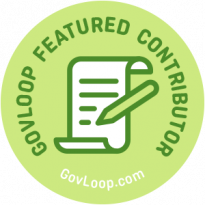Living the life of an acting or interim leader. In my work as an organizational change consultant, I often see effective mid-level managers being frankly “plopped” into acting or interim director roles. The assumption is that, because they have proven to be successful in their current capacity, they can “steady the ship” until the just-vacated director position has been filled. On its face this seems like a reasonable solution — even a great growth opportunity — but is this approach working in real life?

What is “temporary?” Naming an “acting” when the incumbent director vacates is a common and quick stopgap. Sometimes, the director has been detailed to another sector of the organization so there is no search process because the expectation is that director will return to their original spot. Often, though, that director doesn’t return, and the search must launch after all, in which case the acting becomes an interim and continues to serve. Add to this the countless predictable leadership changes that occur every election cycle when positions are often filled with actings and interims.
Dilemma-city. During this unsettled period, that “temporary” person must make tough decisions about whether and when to stay the course and follow precedent, or to carve their own path. On top of that, the now interim director may want to decide whether to compete as a candidate for the seat they are keeping warm if that position gets posted. And then there are often difficult staffing staff changes they need to make that are also, at least for now, temporary.
Change cascades — so do the dilemmas. Once you move someone into an acting or interim role, everything else in that work unit invariably has to change too. When a mid-level is elevated up to interim, the role they vacate must be filled with — yes — another Interim. Now it’s up to the interim to name who that should be, and so the process of moving people around is perpetuated. Because these roles are viewed as “temporary,” interims are often dual-hatted, meaning they must perform in their new role plus continue to do the work or at least part of the work of their previous role. And because this is all “temporary,” there rarely is budget for hiring since this is all — well — temporary. And even if indeed this is “just” temporary, I hear reports of work overload and stress coupled with minimal if any training for those who are slipping into and out of positions (for which they weren’t hired) and often complex changes in intra-team relationships and dynamics (that must be dealt with, and that’s a whole other topic!).
What to do: This approach frankly isn’t working well, largely because stopgap staffing is by definition done so quickly that there is little pause taken to pay attention to its organizational impacts — and there are many. Although there are no easy answers, here are some key things to consider:
- SME to Leader. The person on your team who knows the work best, has been there the longest, or has the most expertise may not make the best leader. Yes, the leader needs subject matter knowledge for sure, but, if you are the person naming an interim or acting, consider the team member who’s a good communicator and who’s demonstrated success at building trusted relationships. Your interim or acting will need to mobilize the energy and hearts of the others on the team — including those fabulous SMEs — and foster collaboration.
- Where you sit is what you see. One of the biggest shifts for someone moving into an interim or acting role is what they need to see that is different from what they’ve been seeing until now. Call it “the big picture.” Context. Widening the aperture to see and connect dots that previously were not evident to them because of where they sat. An interim or acting will need to adapt to a new seat and a different scope, and quickly grow the ability to look both “down and in” as well as “out and across.”
- “Steady” or steer? Answer: Steer! I’ve frequently encountered the question: “How much should I change or not change things while I’m in this interim role?” There isn’t a clear-cut answer, obviously, but certainly time informs the way forward. The longer someone is in an interim or acting position, the more important it is to focus as much on steering the way forward as it is on keeping things on a steady keel. Often a back-to-basics approach is a reasonable lens to help think through what if anything needs to change. Bottom line: while you are at the wheel, you’ve got to steer.
- Reporting up. For interims and actings, this is going to be a significant learning curve because it is most likely all new. They will need to make communication a priority and discuss with their new, temporary, supervisor what the expectations are, what new relationships they will need to forge, what new measures of success are on the line. And those to whom they report will need to bring special care to providing support and guidance as the interim or acting settles into this new space. The greater the transparency — both ways — the more trust can grow, and the easier it will be for the acting of interim to ask for help when they need it.
- Peer relationships. As an interim or acting, your position in the org structure has changed — even if it’s only temporary. The actions you take, the behaviors people observe, will be very consequential. Your former peers will look to how you make decisions, how you involve and inform them, how you “show up” as the new leader — and this is especially challenging if, once a new director is named or the existing one returns, you resume your previous role in the organization. It is really important to be sensitive to what this looks and feels like: it may not be possible to assume the new leader role effectively and remain being “buddies” with people on your team.
There’s no “going back.” When the director returns from their detail or a new director is hired, they won’t be entering into to the same organization. Provisions will be needed to facilitate re-entry and bring intentionality to an adjustment period. That director will now be part of a new organization whose team members have new learnings, new capabilities, new insights — and new expectations of each other and of the director. A plan is needed to make it work — whether for a returning or new director or for everyone who has served in temporary roles to, or to re-establish goals and roles, what their purview is going to be, and how they want to work together in the service of their organization’s mission.
Nina is a change management practitioner and principal of InterrogativesWork, LLC, a change advisory service dedicated to helping clients and consultants plan and implement organizational change. She has supported a wide variety of organizational change and strategy efforts — from digital transformations and functional re-alignments to the stand-up of enterprise risk management programs, PMOs, organization-wide policy and culture change, performance improvement initiatives, and more. She has an MA in Communications and an MS in Organization Development and graduated from both the Johns Hopkins Fellows in Change Management Program and Georgetown University’s McDonough School’s Change Management Advanced Practitioner Program (CMAP). She is ProSci trained, and has written about organizational change for govloop.com, Change Management Review, and Government Executive.





Leave a Reply
You must be logged in to post a comment.